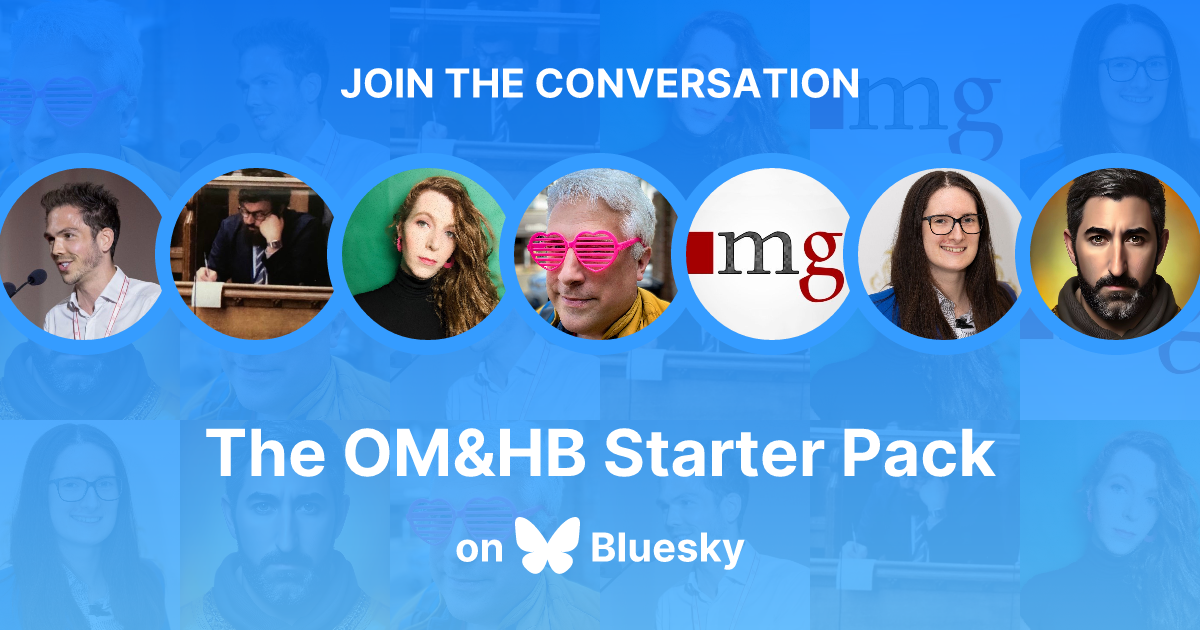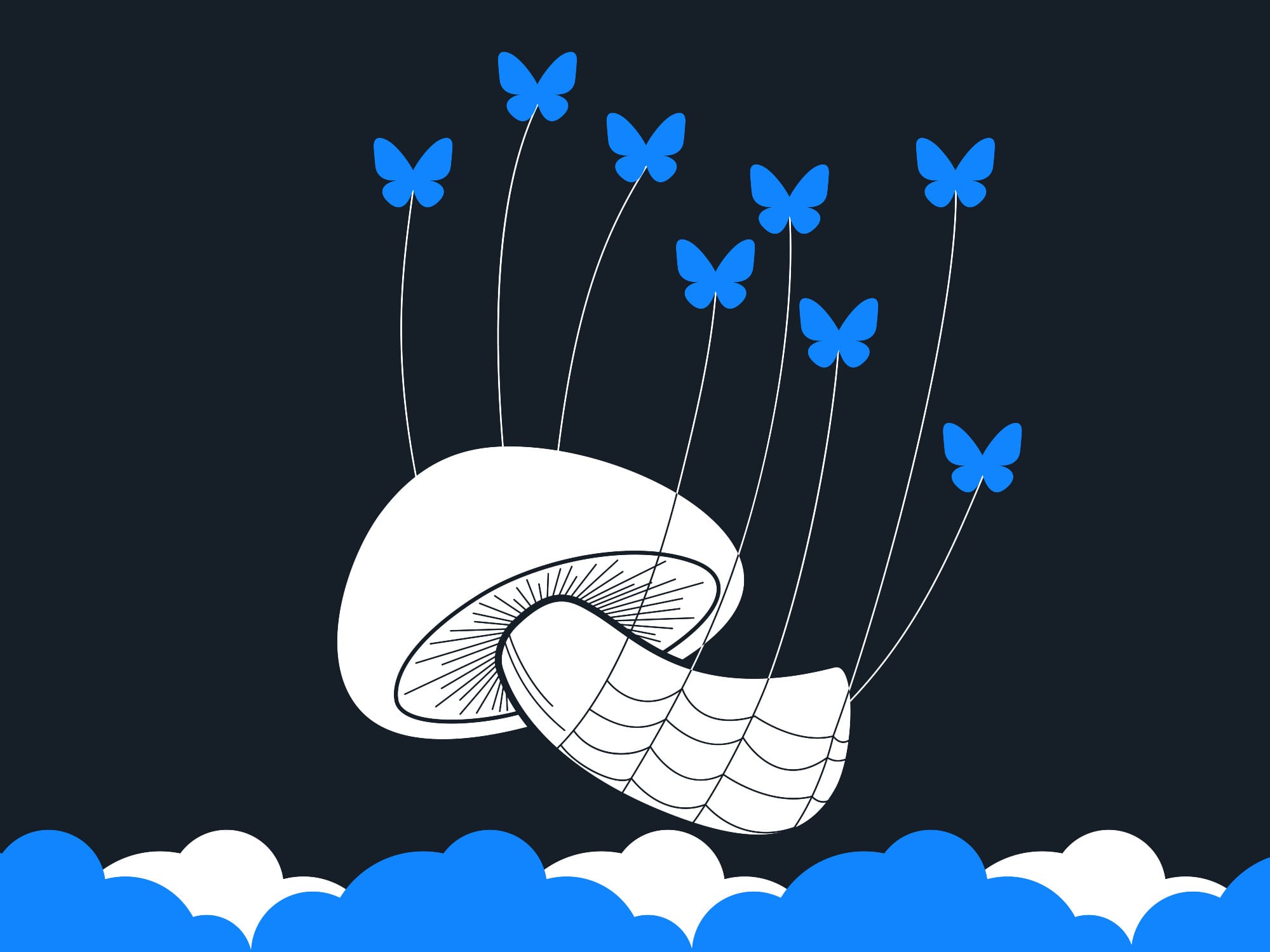The Bluesky explosion and the Substack trap
The Twitter offshoot is edging towards becoming an X replacement — and two old school web thinkers critique Substack

The growth of Bluesky has been quite something since I wrote about it last week. It was all over the traditional media by the weekend, fuelling the growth further. I was quoted on the migration and the reasons behind if for a piece on the Sky News website on Saturday:

Why should we pay attention? With well over 20m people now there, network effects are beginning to kick in. If you go there, you’re likely to find people you want to follow. And want to have conversations with. Once the network turns that corner, it becomes self-sustaining. If Bluesky isn’t there already, it’s getting pretty close. This is the point I was trying to make in the interview with Sky News:
“The value of social networks to the user is based on the number of people there,” says Mr Tinworth. “Networks have to reach a critical mass of users before they actually manage to take off.
“Bluesky is picking up waves of users and the community is pushing it towards a level of sustainability.”
What makes a platform a TikTok rather than a Google+? A critical mass of users.
What makes a social media exodus work?
The last exodus like this I remember was people “leaving” Facebook wholesale for Google+. Friends put “moved to G+” banners on their Facebook accounts — and then took them down months later as they crawled back.
Will this be similar? Perhaps — but I doubt it. The momentum is there, and the longer it continues, the more established Bluesky will become. (You can watch the user numbers grow in real time — currently adding users at the rate of 5.92 a second as I write this.) Social networks do die, and others do take off. Witness the decline of MySpace and the rise of Facebook two decades ago.
The switch is happening for me personally. I’ve reached the point where my old muscle memory of opening the Twitter app in a bored moment has been replaced by Bluesky, although I’m still spending time in Ivory, too (for Mastodon).
The network effect works both ways: as people leave X, it becomes less valuable. And so people spend less time there. And others leave. And so it becomes less valuable…
The servers cannae take it, Captain
They’re seeing some growth pains: they now have fewer than one member of staff per 1m users, and the server capacity is creaking a little.
To be clear, we do have plans for scaling, we just kinda expected more than a couple days notice before getting blasted with a million new users a day. The team is rapidly deploying fixes and new software to adapt. More servers in the mail.
— Uai (@why.bsky.team) 20 November 2024 at 21:22
But that’s a good sign: their growth is outpacing their plans.
That said, there are reasons to be wary of too much investment in Bluesky as your one true X replacement — but I’ll come back to that tomorrow.
Filling your Bluesky
Here are some places to get started:
- Press Gazette has a list of titles that have opened official accounts
- If local account for local people are more your thing, Hold the Front Page has you sorted.
- The Reuters Institute have a good starter pack

Oh, and the OM&HB Starter pack is ready. If you want to be on it, just hit reply and let me know!
Don’t call it a Substack

Substack gets generally good press in the media world, and some commentators are almost cultish in their admiration for it. But pushback is coming. For example, here’s OG Blogger and digital media thinker Anil Dash on excoriating form:
Email's been here for years. But the reason Substack wants you to call your creative work by their brand name is because they control your audience and distribution, and they want to own your content and voice, too. You may not think you care about that today, but you will when you see what they want to do with it.
Preach it! This is not my Ghost, this is my blog and newsletter. And it wasn’t my WordPress, my Movable Type or my Blogger before that.
This is also a great quote:
Links are powerful — that's why Instagram and Twitter and Threads punish and limit them, and why Substack tries to take credit for them. And that's why "wherever you get your podcasts" is such a radical concept — like email, it's a medium that the tech tycoons don't, and can't, own. People can read your writing "wherever they get their email".
Links are powerful — and the journalism game consistently underestimates that.
The Substack trap
John Gruber followed up on Dash’s post this morning:
Substack, very deliberately, has from the get-go tried to have it both ways. They say that publications on their platform are independent voices and brands. But they present them all as parts of Substack. They all look alike, and they all look like “Substack”. I really don’t get why any writer trying to establish themselves independently would farm out their own brand this way. It’s the illusion of independence.
Substack started as a newsletter service. The delight of newsletters is that they’re just email — an open standard with no attention algorithm in the way. But step by step, feature by feature, Substack is making itself a closed platform, with more and more features locked into the app or the website.
You can leave — you can take your content, subscribers and paid subs — but if you’ve come to depend on Substack-exclusive features for engagement, you start degrading the reader experience.
As Gruber puts it:
My advice to any writer looking to start a new site based on the newsletter model would be to consider Substack last, not first. Not because Substack is a Nazi bar, which I don’t think it is at all, but simply because there are clearly better options, and the company’s long term goal is clearly platform lock-in.
I have a lot of sympathy for John’s position. There’s a reason I’m on Ghost.
Quickies
- 📹 Instagram crushes your video quality if it’s not popular. It’s no longer a social network — it’s a social media app, for creators and audiences.
- 💩 I fail to understand why, over two decades into the attention crisis (content is abundant, attention is scarce), some publishers insist on upping the story volume further.
- 🙈 Social media first startup realises it needs its own site. Who could have predicted? (Anyone who has watched this play out again and again for a decade…)
- 💬 Amazing visualisation of the Reddit communities
- 🐘 A pre-print paper (off, admittedly, a limited sample) suggests that Musk skewed the X algorithm towards Republicans after he endorsed Trump.
And Finally…

The Fail Whale for a new generation
Back in the early days of Twitter, when its servers struggled, you used to get the Fail Whale image.
And now it's back, in a more fungi form for Bluesky…
Congratulations on being over capacity, @bsky.app! A throwback to a bygone era, updated for our new home, made by me as requested by @edfff.com.
— Dallas Nagata White (@dallasnagata.bsky.social) 21 November 2024 at 01:06
[image or embed]






